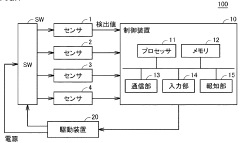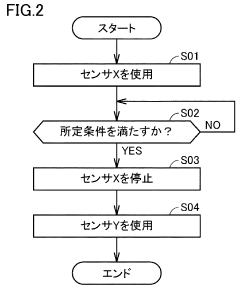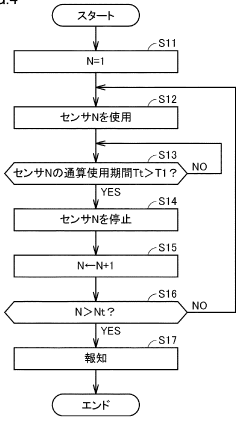Zirconia in Automotive Sensors: Enhancing Sensor Accuracy
Zirconia Sensor Evolution
The evolution of zirconia sensors in automotive applications represents a significant technological advancement in enhancing sensor accuracy. This progression can be traced through several key stages, each marked by notable improvements in sensor performance and reliability.
In the early stages of automotive sensor development, zirconia-based oxygen sensors were introduced to monitor exhaust gas composition. These initial sensors utilized the unique properties of zirconia, particularly its ability to conduct oxygen ions at high temperatures. This breakthrough allowed for more precise control of air-fuel ratios, leading to improved engine efficiency and reduced emissions.
As environmental regulations became more stringent, the demand for more accurate and responsive sensors grew. This led to the development of planar zirconia sensors in the 1990s. These sensors featured a flat design that allowed for faster heat-up times and improved response rates. The planar structure also facilitated easier integration into vehicle exhaust systems, making them more cost-effective and easier to manufacture at scale.
The next significant evolution came with the introduction of wideband zirconia sensors, also known as air/fuel ratio sensors. These sensors expanded the measurement range, allowing for more precise control of the air-fuel mixture across a broader spectrum of operating conditions. This advancement was particularly crucial for the development of lean-burn engines and more sophisticated emission control systems.
In recent years, the focus has shifted towards miniaturization and increased durability. Modern zirconia sensors incorporate advanced materials and manufacturing techniques to create more compact designs without sacrificing performance. These sensors often feature improved protective coatings and more robust electrical connections, enhancing their longevity in the harsh automotive environment.
The latest generation of zirconia sensors integrates multiple sensing elements into a single package. These multi-functional sensors can simultaneously measure oxygen levels, temperature, and even detect the presence of other gases such as NOx. This integration not only improves overall sensor accuracy but also reduces the total number of sensors required in a vehicle, leading to cost savings and simplified engine management systems.
Looking forward, the evolution of zirconia sensors is likely to continue with a focus on increased sensitivity, faster response times, and enhanced durability. Emerging technologies such as nanotechnology and advanced ceramic composites are being explored to further improve sensor performance. Additionally, the integration of smart features and wireless connectivity is expected to play a significant role in the next generation of automotive zirconia sensors, enabling real-time monitoring and predictive maintenance capabilities.
Automotive Sensor Market
The automotive sensor market has experienced significant growth in recent years, driven by the increasing demand for advanced driver assistance systems (ADAS) and autonomous vehicles. This market segment is characterized by a diverse range of sensor technologies, including radar, lidar, ultrasonic, and camera-based systems, each playing a crucial role in enhancing vehicle safety and performance.
The global automotive sensor market size was valued at approximately $26 billion in 2020 and is projected to reach $40 billion by 2025, growing at a CAGR of around 8% during the forecast period. This growth is primarily attributed to the rising adoption of electric vehicles, stringent government regulations for vehicle safety, and the integration of sensors in connected car technologies.
Geographically, Asia-Pacific dominates the automotive sensor market, with China and Japan leading in terms of production and consumption. The region's strong automotive manufacturing base and rapid technological advancements contribute to its market leadership. North America and Europe follow closely, driven by the presence of major automotive OEMs and their focus on developing autonomous driving technologies.
Key players in the automotive sensor market include Bosch, Continental AG, Denso Corporation, and Infineon Technologies. These companies are continuously investing in research and development to improve sensor accuracy, reliability, and cost-effectiveness. The competitive landscape is characterized by strategic partnerships, mergers, and acquisitions as companies strive to expand their product portfolios and market presence.
The market demand for automotive sensors is primarily driven by the need for enhanced vehicle safety, improved fuel efficiency, and reduced emissions. As vehicles become more complex and autonomous, the number of sensors per vehicle is expected to increase significantly. This trend is further supported by the growing consumer preference for advanced safety features and the push towards electrification in the automotive industry.
Emerging trends in the automotive sensor market include the development of multi-modal sensor fusion technologies, miniaturization of sensor components, and the integration of artificial intelligence for improved sensor data processing. These advancements are crucial in addressing the challenges of sensor accuracy and reliability, particularly in adverse weather conditions and complex driving environments.
The introduction of zirconia-based sensors in automotive applications represents a significant technological advancement. Zirconia sensors offer superior accuracy, stability, and durability compared to traditional sensor materials, making them particularly suitable for critical applications such as engine management systems and exhaust gas monitoring. The adoption of zirconia sensors is expected to grow as automakers seek to meet increasingly stringent emissions regulations and improve overall vehicle performance.
Zirconia Sensor Challenges
Despite the numerous advantages of zirconia in automotive sensors, several challenges persist in their development and implementation. One of the primary issues is the high operating temperature required for zirconia sensors to function effectively. This necessitates sophisticated heating elements and control systems, which can increase the overall complexity and cost of the sensor unit.
The stability and durability of zirconia sensors in harsh automotive environments pose another significant challenge. Exposure to extreme temperatures, vibrations, and corrosive gases can lead to degradation of the sensor material over time, potentially affecting its accuracy and longevity. Manufacturers must develop robust protective coatings and packaging solutions to mitigate these effects without compromising sensor performance.
Miniaturization of zirconia sensors presents a considerable technical hurdle. As automotive systems become more compact and integrated, there is a growing demand for smaller sensors that maintain high accuracy. Reducing the size of zirconia sensors while preserving their sensitivity and reliability requires advanced manufacturing techniques and innovative design approaches.
The response time of zirconia sensors is another area of concern, particularly in applications requiring rapid feedback, such as engine management systems. Improving the speed at which these sensors can detect and report changes in gas composition or oxygen levels is crucial for enhancing overall vehicle performance and emissions control.
Cross-sensitivity to other gases remains a challenge for zirconia sensors. While they excel in oxygen detection, their ability to differentiate between various gases in complex mixtures can be limited. This can lead to inaccurate readings in certain conditions, necessitating the development of more selective sensor designs or complementary sensing technologies.
The cost-effectiveness of zirconia sensors in mass production is an ongoing challenge. While their performance is superior in many aspects, the manufacturing processes and materials involved can make them more expensive than alternative sensing technologies. Striking a balance between performance and cost is essential for widespread adoption in the automotive industry.
Calibration and long-term stability of zirconia sensors present additional challenges. Ensuring consistent accuracy over the lifespan of a vehicle requires sophisticated calibration techniques and potentially self-diagnostic capabilities. Developing sensors that can maintain their precision without frequent recalibration is a key focus area for researchers and manufacturers.
Current Zirconia Solutions
01 Zirconia composition for improved accuracy
Specific compositions of zirconia materials are developed to enhance accuracy in various applications. These compositions often involve precise ratios of zirconia with other elements or compounds to achieve desired properties such as stability, strength, and precision in manufacturing or measurement processes.- Zirconia composition and processing for improved accuracy: Optimizing the composition and processing of zirconia materials can enhance their accuracy in various applications. This includes controlling the grain size, porosity, and phase composition of zirconia ceramics to achieve better dimensional stability and precision. Advanced sintering techniques and the addition of specific dopants can further improve the material's properties and accuracy.
- Zirconia-based dental restorations with high accuracy: Zirconia is widely used in dental applications due to its biocompatibility and aesthetic properties. Techniques for fabricating highly accurate zirconia-based dental restorations include CAD/CAM milling, 3D printing, and precision casting. These methods, combined with advanced zirconia materials, enable the production of dental prosthetics with excellent fit and dimensional accuracy.
- Zirconia coatings for precision components: Applying zirconia coatings to various substrates can enhance surface properties and dimensional accuracy. Techniques such as plasma spraying, chemical vapor deposition, and sol-gel methods are used to create uniform and precise zirconia coatings. These coatings can improve wear resistance, thermal insulation, and overall accuracy of components in industries like aerospace and electronics.
- Zirconia-based sensors and measurement devices: Zirconia's unique properties make it suitable for use in high-precision sensors and measurement devices. Applications include oxygen sensors, gas analyzers, and pressure transducers. The accuracy of these devices relies on the careful control of zirconia's composition, microstructure, and electrode design to ensure reliable and precise measurements in various environments.
- Zirconia in additive manufacturing for high-precision parts: Additive manufacturing techniques, such as 3D printing, are being developed to produce complex zirconia parts with high accuracy. These methods allow for the creation of intricate geometries and internal structures that are difficult to achieve with traditional manufacturing processes. Optimizing printing parameters, post-processing techniques, and material formulations is crucial for achieving the desired accuracy in 3D-printed zirconia components.
02 Manufacturing techniques for high-precision zirconia components
Advanced manufacturing methods are employed to produce zirconia components with high accuracy. These techniques may include specialized sintering processes, precision machining, or novel forming methods that result in zirconia parts with tight tolerances and excellent dimensional stability.Expand Specific Solutions03 Zirconia-based sensors and measurement devices
Zirconia is utilized in the development of highly accurate sensors and measurement devices. Its unique properties allow for the creation of sensitive and precise instruments for various applications, including temperature sensing, gas detection, and analytical measurements.Expand Specific Solutions04 Surface treatment of zirconia for enhanced accuracy
Various surface treatment methods are applied to zirconia components to improve their accuracy and performance. These treatments may include coatings, polishing techniques, or chemical modifications that enhance surface properties, reduce wear, or improve dimensional stability.Expand Specific Solutions05 Zirconia in high-precision optical applications
Zirconia is employed in optical components and systems requiring high accuracy. Its optical properties, combined with its mechanical stability, make it suitable for precision lenses, mirrors, or other optical elements used in imaging, laser systems, or scientific instruments.Expand Specific Solutions
Automotive Sensor Players
The automotive sensor market utilizing zirconia technology is in a growth phase, driven by increasing demand for high-precision sensors in vehicles. The market size is expanding rapidly, with major players like DENSO Corp., Toyota Motor Corp., and Delphi Technologies IP Ltd. investing heavily in research and development. The technology's maturity is advancing, with companies such as Heraeus Sensor Nite GmbH and ROHM Co., Ltd. making significant strides in enhancing sensor accuracy. Established automotive suppliers and emerging tech companies are competing to develop more efficient and reliable zirconia-based sensors, indicating a highly competitive landscape with potential for further innovation and market expansion.
DENSO Corp.
Toyota Motor Corp.
Key Zirconia Innovations
- Incorporating stabilized ZrO2 into the electrode material to maintain porosity and adhesion, and optimizing the Pt/ZrO2 ratio and baking temperature to enhance mechanical and electrical stability, while reducing sintering and improving sensitivity and response speed.
- A sensor system comprising multiple yttria-stabilized zirconia (YSZ) sensors and a controller that sequentially switches between sensors based on predetermined conditions, ensuring continuous operation even if one sensor fails due to deterioration.
Environmental Regulations
Environmental regulations play a crucial role in shaping the automotive industry's approach to sensor technology, particularly in the context of zirconia-based sensors for enhancing accuracy. These regulations, primarily focused on reducing vehicle emissions and improving fuel efficiency, have driven the demand for more precise and reliable sensor systems.
The implementation of stringent emission standards, such as Euro 6 in Europe and Tier 3 in the United States, has necessitated the development of advanced sensor technologies capable of monitoring and controlling exhaust gases with greater precision. Zirconia sensors, known for their high accuracy and durability, have become increasingly important in meeting these regulatory requirements.
In addition to emission control, environmental regulations have also emphasized the need for improved fuel efficiency. This has led to the integration of more sophisticated engine management systems, which rely heavily on accurate sensor data. Zirconia-based sensors, with their ability to provide precise measurements of oxygen levels in exhaust gases, contribute significantly to optimizing engine performance and reducing fuel consumption.
The growing focus on electric and hybrid vehicles, driven by environmental policies aimed at reducing carbon emissions, has also influenced the development of zirconia sensors. These sensors play a vital role in battery management systems, ensuring optimal performance and longevity of electric powertrains.
Furthermore, regulations concerning the recyclability and environmental impact of automotive components have prompted manufacturers to consider the lifecycle of sensor materials. Zirconia, being a durable and recyclable material, aligns well with these sustainability requirements.
As environmental regulations continue to evolve, the automotive industry is likely to see an increased emphasis on sensor accuracy and reliability. This trend is expected to drive further innovations in zirconia-based sensor technology, potentially leading to the development of multi-functional sensors capable of monitoring a wider range of parameters with even greater precision.
The global nature of environmental regulations also necessitates the harmonization of sensor technologies across different markets. Manufacturers are increasingly developing sensor systems that can meet the most stringent standards worldwide, with zirconia sensors often at the forefront of these efforts due to their versatility and high performance.
In conclusion, environmental regulations have been a significant driving force behind the adoption and advancement of zirconia-based sensors in the automotive industry. As these regulations continue to tighten, the demand for more accurate and reliable sensor technologies is expected to grow, further cementing the role of zirconia sensors in enhancing vehicle performance and environmental compliance.
Zirconia Sensor Reliability
The reliability of zirconia sensors in automotive applications is a critical factor in ensuring the accuracy and longevity of vehicle performance monitoring systems. Zirconia sensors, particularly those used in oxygen sensing applications, have demonstrated exceptional durability and precision in harsh automotive environments. These sensors typically operate in high-temperature conditions, often exceeding 700°C, and are exposed to various contaminants in exhaust gases.
One of the key factors contributing to the reliability of zirconia sensors is their robust ceramic structure. The yttria-stabilized zirconia (YSZ) used in these sensors exhibits excellent thermal stability and resistance to chemical corrosion. This allows the sensors to maintain their performance characteristics over extended periods, even when subjected to thermal cycling and exposure to aggressive exhaust gases.
The sensor's reliability is further enhanced by its simple yet effective design. The solid-state nature of zirconia sensors eliminates the need for moving parts, reducing the potential for mechanical failures. Additionally, the sensor's ability to self-clean at high temperatures helps maintain its accuracy by preventing the buildup of contaminants on the sensing element.
However, despite their inherent reliability, zirconia sensors can face challenges that may impact their long-term performance. One such challenge is thermal shock, which can occur during rapid temperature changes in the exhaust system. To mitigate this, manufacturers have developed advanced thermal management techniques and protective coatings that help shield the sensor from extreme temperature fluctuations.
Another factor affecting sensor reliability is poisoning by certain exhaust gas components, such as lead, silicon, or phosphorus. These elements can accumulate on the sensor surface, gradually reducing its sensitivity. To address this issue, researchers have developed advanced filtering techniques and protective layers that help extend the sensor's operational life.
The electrical connections and wiring harnesses associated with zirconia sensors also play a crucial role in overall reliability. Vibration, thermal stress, and corrosive environments can potentially compromise these connections. As a result, automotive manufacturers have implemented robust sealing techniques and high-quality connectors to ensure the integrity of the electrical system.
Long-term stability testing has shown that well-designed zirconia sensors can maintain their accuracy within ±2% over hundreds of thousands of miles of vehicle operation. This level of reliability is essential for meeting stringent emissions regulations and ensuring optimal engine performance throughout the vehicle's lifetime.







